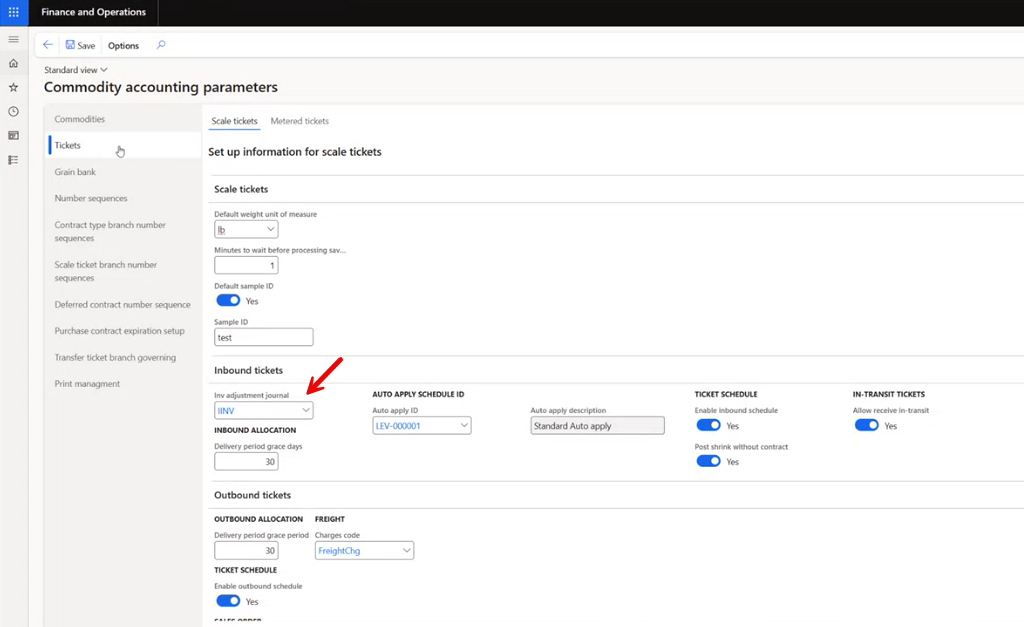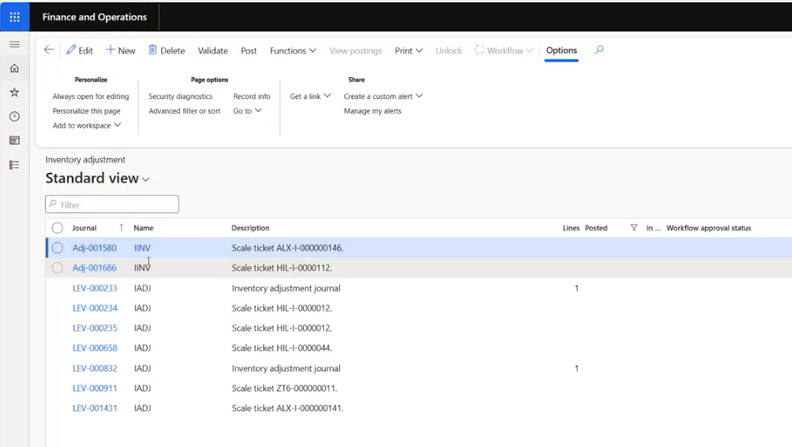Define the Inventory Adjustment Journal to Use for Scale Ticket Postings
With the release of Levridge 2025 Release 2.0, a new feature has been introduced to streamline inventory tracking and improve auditability: Commodity Accounting Inventory Adjustment Journal.
Why Traceability Matters
The ability to trace transactions back to their originating documents ensures transparency, supports compliance, and simplifies troubleshooting. Whether you’re reconciling discrepancies or preparing for an audit, knowing exactly where your data comes from can save time and reduce risk.
Levridge 2025 Release 2 addresses this need by introducing a dedicated inventory adjustment journal specifically for commodity accounting. This journal provides a clear and customizable way to track inventory adjustments, particularly those related to inbound scale tickets and shrinkage.
Navigating to the New Feature
Users can find it by navigating to:
Commodity Accounting > Setup > Commodity Accounting Parameters > Ticket Menu Option > Inbound Tickets
Here, users can select the inventory journal used when posting inventory adjustments. The journal name is customizable, allowing organizations to tailor it to their naming conventions or operational needs. This flexibility makes it easier to identify and filter specific adjustments later on.

Once set up, the journal integrates seamlessly with the inventory management system. Users can view adjustments by going to:
Inventory Management > Journal Entries > Items > Inventory Adjustment
In this view, the name column reflects the journal name configured in the commodity accounting parameters. This consistency between setup and reporting ensures that users can easily track and filter inventory adjustments, enhancing visibility and control.

Real-World Applications
The new journal is particularly useful for managing inbound scale tickets and shrinkage. These are common occurrences in commodity operations, and having a dedicated journal for them simplifies the posting process. It also ensures that these adjustments are clearly documented and easily traceable.
For example, if a batch of inbound goods shows a discrepancy due to shrinkage, the adjustment can be posted using the designated journal. Later, when reviewing inventory records, users can filter by the journal name to quickly locate and analyze the adjustment. This not only improves operational efficiency but also supports better decision-making.
Benefits
- Improved Traceability: Transactions are clearly linked to their source, supporting audits and internal reviews.
- Customizable Naming: Journal names can be tailored to fit organizational standards, improving clarity.
- Streamlined Navigation: Easy access through familiar menu paths ensures quick setup and review.
- Enhanced Filtering: Users can filter inventory adjustments by journal name, simplifying data analysis.
Operational Efficiency: Reduces time spent searching for records and reconciling discrepancies.
Additional Resources
Accompanying YouTube video
Enhancing Grain Transfer Efficiency with the New Discount Schedule Feature: Transfer Ticket – Discount Schedule to Post Shrink: https://www.levridge.com/enhancing-grain-transfer-efficiency-with-the-new-discount-schedule-feature/